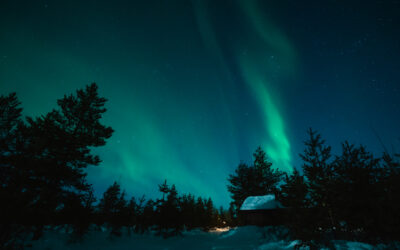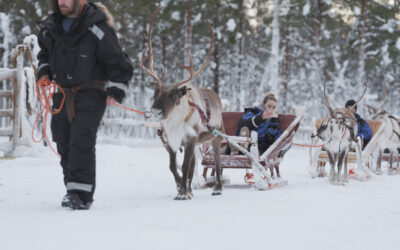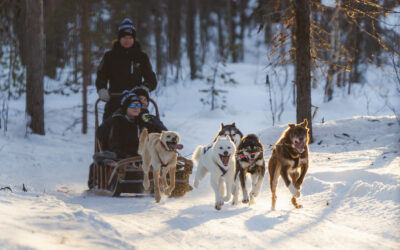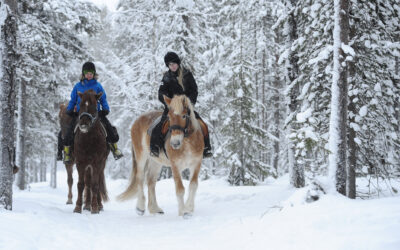Finn horses have evolved remarkable adaptations that enable them to thrive in Lapland’s harsh winter conditions. These sturdy native Finnish equines possess thick, double-layered winter coats that provide exceptional insulation against temperatures as low as -30°C. Their compact, muscular bodies conserve heat efficiently while their metabolic adaptations allow them to extract maximum nutrition from sparse winter vegetation. Additionally, their calm temperament and sure-footedness make them ideally suited for navigating snow-covered terrain, allowing these resilient animals to remain active working partners throughout the extreme Arctic winter.
Understanding Finn horses: Finland’s resilient native breed
The Finn horse, or Finnhorse, stands as Finland’s only native horse breed and represents a living connection to the nation’s agricultural and cultural heritage. These versatile animals have been integral to Finnish life for centuries, originally serving as important workhorses in farming, forestry, and transportation across the challenging northern landscape.
What makes these horses truly remarkable is their exceptional adaptation to the Nordic environment. Finn horses typically stand between150–160 cm high with a sturdy, muscular build that combines strength with remarkable agility. Their physical characteristics—including dense bone structure, thick manes, and robust hooves—have been shaped through generations of natural selection in Finland’s demanding climate.
Unlike many imported breeds, Finn horses possess genetic adaptations specifically suited to northern conditions. Their temperament reflects their heritage as well—they exhibit extraordinary patience, reliability, and a steady disposition even in challenging situations. This combination of physical hardiness and calm demeanor makes them perfectly suited for horse experiences in Lapland’s wilderness.
The breed’s versatility is legendary among Finns, who often refer to these horses as “a horse of a thousand tasks.” Historically, the same horse might plow fields in summer, haul timber in winter, and transport families to church on Sundays. Today, this adaptability translates to excellence in various riding disciplines, from dressage to harness racing, and most importantly for you as a visitor, reliable trail riding through Lapland’s snow-covered landscapes.
How do Finn horses physically adapt to extreme arctic temperatures?
Finn horses develop remarkable physiological adaptations that allow them to thrive in Lapland’s extreme winter conditions where temperatures routinely plunge below -30°C. Their most visible adaptation is their exceptional winter coat—a dense, double-layered system of insulation that provides superior protection against the biting Arctic cold.
This winter coat consists of a thick, woolly undercoat topped by longer, coarser guard hairs that effectively trap warm air close to the body while repelling moisture and wind. The coat grows substantially thicker as daylight hours decrease in autumn, naturally preparing these horses for the coming winter. Additionally, their manes and tails become fuller, providing extra protection for vulnerable areas like the neck and hindquarters.
Beyond their impressive coats, Finn horses possess efficient metabolic adaptations that help them conserve energy during cold months. Their bodies become remarkably efficient at maintaining core temperature while minimizing heat loss. Their compact, muscular build with relatively short limbs presents less surface area for heat loss compared to many other breeds—a classic cold-climate adaptation seen in many Arctic animals.
The breed’s robust circulatory system includes specialized blood vessel arrangements in their extremities that help prevent frostbite by carefully regulating blood flow to their legs and hooves. This adaptation, similar to that found in reindeer, allows them to stand comfortably in deep snow for extended periods without risk to their limbs.
When you encounter these magnificent animals during horseback riding tours through Lapland’s snow-draped forests, you’ll witness firsthand how their physical adaptations allow them to move confidently through deep snow and navigate icy terrain that would challenge many other breeds. Their broad, strong hooves act like natural snowshoes, distributing their weight effectively across snow-covered ground.
What special diet helps Finn horses survive Lapland winters?
Finn horses thrive through Lapland’s harsh winters thanks to specialized dietary adaptations and carefully managed feeding practices. Unlike horses in milder climates, these native equines have evolved highly efficient digestive systems capable of extracting maximum nutrition from relatively sparse winter forage.
During the coldest months, Finn horses naturally increase their intake of high-fiber feeds. Their primary winter diet consists of good quality hay or haylage that provides essential fiber to maintain their internal “furnace.” Fermentation of fiber in their hindgut generates significant heat, helping them maintain body temperature during extreme cold. This process is so efficient that properly fed Finn horses often appear completely comfortable even when frost forms on their winter coats.
When we take you on our riding tours, we pay careful attention to their nutritional needs. Their daily rations are adjusted based on workload and temperature, with special consideration given to providing adequate calories during periods of intense cold when energy requirements increase significantly. High-quality hay is supplemented with carefully balanced concentrates to support their energy needs for carrying riders through winter landscapes.
Water intake requires special management during Lapland winters. Horses are encouraged to drink sufficiently through access to warmed water, as cold water reduces consumption and can lead to digestive issues. At our Finnhorse stables, we monitor hydration carefully, recognizing its important role in maintaining digestive health and overall well-being in cold conditions.
Salt and mineral supplementation is also tailored to winter needs, ensuring these hard-working animals maintain proper electrolyte balance despite increased sweating under their thick coats during exercise. This comprehensive nutritional management ensures that Finn horses maintain optimal health and energy levels throughout the winter tourism season.
Where to stay during your Finn horse adventure in Lapland
After a day of exploring Lapland’s winter wonderland with Finn horses, we offer exceptional accommodation options that continue your immersion in Finnish nature.
For those seeking a truly special overnight experience, our Aurora Wilderness Cabins offer a peaceful retreat nestled in the serene wilderness of Levi. These cozy cabins feature large windows, including spectacular roof windows that create perfect viewing platforms for the dancing northern lights or the magical Midnight Sun, depending on the season. Our guides escort you through the pristine woods to ensure a comfortable arrival at your cabin, where you’ll find modern conveniences like eco-toilets alongside traditional Finnish charm. Each stay includes a light evening meal and breakfast featuring authentic Finnish specialties, completing this immersive wilderness experience.
Key takeaways: the magic of experiencing Lapland winter with Finn horses
Experiencing Lapland’s winter landscape from the back of a Finn horse creates a profound connection to both the Arctic environment and Finland’s cultural heritage. These remarkable native horses serve as living bridges between past and present, carrying you through snow-covered forests just as they’ve transported Finns for centuries.
The unique adaptations that allow Finn horses to thrive in extreme winter conditions—from their insulating coats to their efficient metabolism—make them not just participants in winter tourism but genuine Arctic survivors. This authenticity adds real value to the experience, as you witness firsthand how these animals represent a harmonious relationship between humans and the challenging northern environment.
The silence of horseback travel through winter landscapes offers a rare commodity in our modern world—genuine tranquility. Without engine noise or mechanical intrusions, you can hear the subtle sounds of winter: snow falling from branches, the distant call of winter birds, and the rhythmic breathing of the horse. This acoustic dimension of the experience creates memories that remain long after photographs fade.
The winter horseback experience provides a pace that allows for genuine appreciation of Lapland’s subtle beauty. Unlike faster-paced activities, the steady walk of a Finn horse gives you time to notice delicate frost formations, animal tracks in the snow, and the changing quality of light that makes Arctic winters so magical. This unhurried journey through the landscape offers an antidote to the rushed nature of modern tourism.
Perhaps most importantly, these interactions with Finn horses create a genuine connection to Finnish identity and values. The horses embody characteristics Finns hold dear—resilience, practicality, reliable strength, and quiet determination. Experiencing winter through this cultural lens provides insights into the Finnish character that more generic activities cannot match.
For those seeking to fully understand Lapland’s winter magic, horseback experiences provide an important perspective that complements other traditional activities. Together, they create a comprehensive picture of how life adapts and thrives in one of Europe’s last great wildernesses. To discover more about these unique experiences or to plan your own winter adventure with these remarkable horses, don’t hesitate to contact our knowledgeable team who can help craft your perfect Lapland experience.




